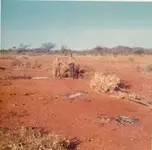uniface
Silver Member
- Joined
- Jun 4, 2009
- Messages
- 3,216
- Reaction score
- 2,905
- Golden Thread
- 0
- Location
- Central Pennsylvania
- Primary Interest:
- Other
Jacques Bordaz, Tools of the Old and New Stone Age (copyright 1958/9, American Museum of Natural History. Dover Books ed., p. 45).
[A]rchaeologists have traditionally concentrated on specialized tools such as points, scrapers, etc., because they offer many specific varieties of shape and types of retouch useful in the study of the temporal and geographical distribution of the various prehistoric groups. In reality, these specialized tools usually represent the lesser part of the total number of chipped stone implements found in archaeological layers. The other part, which usually represents from 50 to 90 percent of the total specimens, includes the unretouched chips and flakes. Often referred to as debitage, or waste, the assumption usually made is that unretouched chips and flakes are the discarded waste from the manufacture of the "proper" tools, that is, the traditionally recognized specialized tools. Actually, many of these unretouched flakes were probably used.
Ethnographic observations of the Australian aborigines, for instance, very clearly indicate that, in general, tools were retouched only when absolutely necessary and that any available flake is used for ordinary jobs and then thrown away when no longer needed. Most of these "casual" tools have no grossly apparent signs of repeated use such as nicked edges.
It seems reasonable to assume that the "law of least effort" was as valid in prehistoric times as it is today and that the most frequent technical activity, cutting, was probably most often done with unworked stone flakes and chips; precisely those chips and flakes which most archaeologists have in the past, at best, merely counted and put aside during the study of collections. On the basis of ethnographic evidence it would appear that such material should also be taken into consideration if a more faithful picture of the activities of prehistoric man is to be obtained.
Amazon Forum Fav 👍
Upvote
0




 .....Blindpig
.....Blindpig